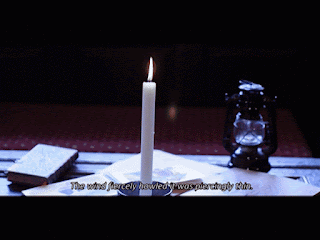This is one of my poems, one of a specific kind.
It was a day, such a glorious day!
My heart resonates as a bird.
Along with three mountains under a ray,
Glazed aka nuptial cakes, though blurred.
In dance THEY've merged into a sun:
Never you've seen this before!
Insistent shouts vibrating like one...
Narcissus'd forgotten his sour!
Graceful and rhythmic, THEY are calm as machine.
Dawning has coloured the mill...
Rigid of lines underlined mise-en-scène:
Aurora scattered sweet chill.
Grateful I feel to have seen such a scene.
Only one thought can abruptly distract:
Nothing is real but nothing is dream...
Set as alive as a bookish extract.
The poem is well-protected and must not be copied neither used without my name included as its author and my permission to post it. Thank you!
Acrostic is a versed composition in which you can find a specific set of letters or words to compose a word or a phrase. It helps, for example, to encrypt the true meaning of the text or create a pattern. An acrostic can be a puzzle and/or a joke in order to create a specific mood and then change it as the enigma is solved.
Acrostic was invented ages ago by Ἐπίχαρμος (Epicharmus Comicus). It was also used as a good protection of author rights, for instance, Quintus Ennius used the technique to spell his name out and confirm that he is indeed the author (Fisher, J., 2014, p.84 - The Annals of Quintus Ennius and the Italic Tradition).
It is interesting that a poem, which is considered as a phonetic kind of art can also be visual as one often has to see the poem so she/he can understand the trick. It even leads us to the ancient illuminated manuscripts, which initials were carefully drawn. This sense of beauty appears in acrostics, especially alphabetical, too as they maintain a preassigned rhythm. When they are read, they might lost it but not when their main idea is to confuse the reader - in this case they would surprise him/her in the end as they will have a look at it.
It was a day, such a glorious day!
My heart resonates as a bird.
Along with three mountains under a ray,
Glazed aka nuptial cakes, though blurred.
In dance THEY've merged into a sun:
Never you've seen this before!
Insistent shouts vibrating like one...
Narcissus'd forgotten his sour!
Graceful and rhythmic, THEY are calm as machine.
Dawning has coloured the mill...
Rigid of lines underlined mise-en-scène:
Aurora scattered sweet chill.
Grateful I feel to have seen such a scene.
Only one thought can abruptly distract:
Nothing is real but nothing is dream...
Set as alive as a bookish extract.
The poem is well-protected and must not be copied neither used without my name included as its author and my permission to post it. Thank you!
Acrostic is a versed composition in which you can find a specific set of letters or words to compose a word or a phrase. It helps, for example, to encrypt the true meaning of the text or create a pattern. An acrostic can be a puzzle and/or a joke in order to create a specific mood and then change it as the enigma is solved.
Acrostic was invented ages ago by Ἐπίχαρμος (Epicharmus Comicus). It was also used as a good protection of author rights, for instance, Quintus Ennius used the technique to spell his name out and confirm that he is indeed the author (Fisher, J., 2014, p.84 - The Annals of Quintus Ennius and the Italic Tradition).
It is interesting that a poem, which is considered as a phonetic kind of art can also be visual as one often has to see the poem so she/he can understand the trick. It even leads us to the ancient illuminated manuscripts, which initials were carefully drawn. This sense of beauty appears in acrostics, especially alphabetical, too as they maintain a preassigned rhythm. When they are read, they might lost it but not when their main idea is to confuse the reader - in this case they would surprise him/her in the end as they will have a look at it.




